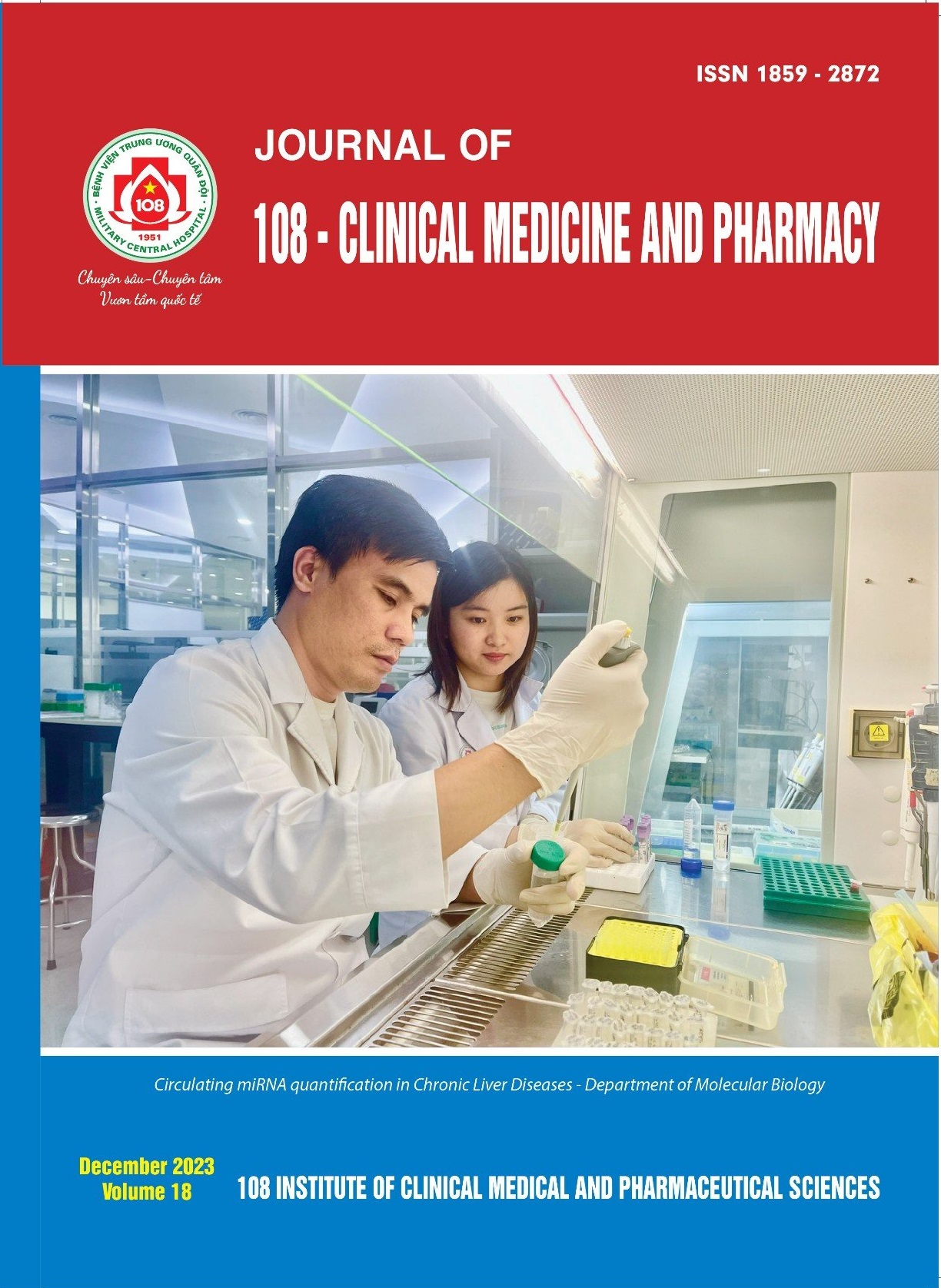The computed tomography characteristics of lumbar facet joints in spondylosis patients
Main Article Content
Keywords
Abstract
Objective: To demonstrate the computed tomography (CT) features of lumbar facet joints in spondylosis patients. Subject and method: It was a cross-sectional and descriptive study including 42 spondylosis patients (416 lumbar facet joints) who took consultation in 108 Military Central Hospital, from December 2021 to July 2022. The subjects were recruited as the correspondence between Gomez Vega 2019 clinical criteria and CT scan. The examined index included: Joint shapes which were C-shaped, straight shape, J-shaped; joint angles regarding sagittal line; joint tropisms. Osteoarthritis characteristics of lumbar facet joints based on Pathria classification with 4 grades. Data were analyzed by SPSS, comparisons of two means were performed by T-test. Statistical significance was defined by p<0.05. Result: Average age of patients was 63.79 ± 2.24 years old, female/male ratio was 4.25. 2/42 (4.76%) patients had sacralization of L5. The proportions of joint shapes (C, straight and J) were 86.76%, 13.24%, 0% respectively. The angle of joints increased in respect of descending levels, from 31.14 ± 8.78o (L12) to 45.61 ± 11.20o (L5S1). The average of articular tropisms in each level were ranged from 5.47 ± 4.09o to 7.58 ± 7.22o. The percentages of Pathria classification (grade 0, 1, 2, 3) were 2.40%, 59.62%, 11.06%, 26.92%, respectively. Pathria 3 dominantly distributed at L45 level (Left 47.62% and right 42.86%). Subchondral sclerosis and hypertrophy contributed to the highest rate of degenerative characteristics (99.03% and 92.51% respectively). Conclusion: C-shaped joint was the most popular. Large tropism might be a consequence of prolonged osteoarthritis. Subchondral sclerosis and hypertrophy presented at almost facet joints. Pathria grade 3 was the most popular at L45 level which had higher percentage of severe osteoarthritis features.
Article Details
References
2. Kalichman L, Li L, Kim DH et al (2008) Facet joint osteoarthritis and low back pain in the community-based population. Spine (Phila Pa 1976) 33(23): 2560-2565.
3. Gómez Vega JC and Acevedo-González JC (2019) Clinical diagnosis scale for pain lumbar of facet origin: Systematic review of literature and pilot study. Neurocirugia 30(3): 133-143.
4. Carrera GF, Haughton VM, Syvertsen A et al (1980) Computed tomography of the lumbar facet joints. Radiology 134(1): 145-148.
5. Pathria M, Sartoris DJ, and Resnick D (1987) Osteoarthritis of the facet joints: Accuracy of oblique radiographic assessment. Radiology 164(1): 227-230.
6. Wallner-Schlotfeldt T (2000) Clinical anatomy of the lumbar spine and sacrum. South African Journal of Physiotherapy 56(3).
7. Fuchs S, Erbe T, Fischer HL et al (2005) Intraarticular hyaluronic acid versus glucocorticoid injections for nonradicular pain in the lumbar spine. J Vasc Interv Radiol 16(11): 1493-1498.
8. Ribeiro LH, Furtado RNV, Konai MS et al (2013) Effect of facet joint injection versus systemic steroids in low back pain: A randomized controlled trial. Spine (Phila Pa 1976) 38(23): 1995-2002.
9. Min HK, He W, Tsai YD et al (2009) Relationship of facet tropism with degeneration and stability of functional spinal unit. Yonsei Med J 50(5): 624-629.
10. Yang M, Wang N, Xu X et al (2020) Facet joint parameters which may act as risk factors for chronic low back pain. J Orthop Surg Res 15(1): 1-6.
 ISSN: 1859 - 2872
ISSN: 1859 - 2872
